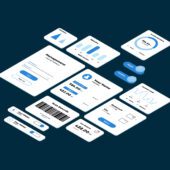It might be difficult to choose the best software development tools when so many options are available. Managing your software development projects might get complicated, but you must choose the right tool for the job. You’re in my hands! By sharing my personal experiences with dozens of software development tools, huge teams, and projects, along with my recommendations for the finest tools, I hope to make your decision easier.

Software Development Tools: What Are They?
Software Development Tools are programs and systems that help develop, test, debug, and upkeep software. Integrated development environments (IDEs), code editors, compilers, debuggers, version control systems, and testing frameworks are just a few examples of the diverse variety of tools in this category. They support the software development lifecycle and include features designed to facilitate effective project management and programming.
Utilizing software development technologies offers advantages, such as enhanced productivity and efficiency in the software development process. These technologies facilitate increased code quality, decreased mistake rates, and more efficient development team collaboration. They offer a structured environment for managing complicated software projects and automating repetitive processes. They play a critical role in upholding project schedules, promoting efficient communication, and guaranteeing that software satisfies functional requirements.
How Should a Software Development Tool Be Selected?
When you are narrowing down, testing, and choosing software development tools, keep the following in mind:
What problem are you seeking to tackle
Start by identifying the software development tool feature gap you aim to fill to explain the features and capabilities the tool needs to deliver.
Who is going to need to use it?
To analyze cost and requirements, examine who’ll be utilizing the tool and how many licenses you’ll need. You’ll need to determine whether access is required for the entire organization or the Software Development Tools team. Once that’s evident, consider whether you’re more interested in making things simple for everyone or fast for your tech-savvy people.
Additional tools required for its operation
Make it clear which tools you’re keeping, which ones you’re replacing, and which ones you’ll need to integrate with. This could comprise your entire tech stack, different data sources, and your current software development tools environment. Additionally, you may need to determine whether the tools must work together or, on the other hand, if you can replace several tools with a single, integrated software development tool.
Results matter
Consider the outcome the tool must provide to be deemed successful. Consider the skills you wish to acquire, the things you want to improve, and the metrics you will use to determine success. You may evaluate the features of software development tools once you’re blue in the face, but you risk losing much important time if you need to consider the results you hope to achieve.
How it would function in your company
Take into account the solutions in conjunction with your delivery methods and workflows. Examine the things that are doing well and the areas that need attention and are producing problems. Keep in mind that every company is unique, so don’t assume that just because a tool is well-liked, it will function well for you, too.
Core Function: 25% of the overall score for weighting
For a solution to be taken into account for my list of the top development tools, it has to handle typical use cases such as:
- Source code management, the ability to debug
- automated testing assistance,
- incorporation of version control systems,
- capabilities for sharing codes and collaborating in real-time,
Extra Notable Elements: 25% of the overall score for weighting
- AI-driven code recommendations and mistake fixing,
- support for cross-platform development, which allows one codebase to target several operating platforms,
- integrated tools for performance optimization and monitoring,
- sophisticated security tools for vulnerability assessment and code analysis,
- Workflows and extensions that are customizable to enable a customized development environment.
Usability: 10% of the overall score for weighting
- Simple, user-friendly design that reduces the learning curve,
- elements that make development accessible to people with impairments,
- Adaptive design for usage on many screens and devices,
Onboarding accounts for 10% of the overall score.
- thorough instructions and documentation,
- interactive demos or tours of products,
- For peer support, community forums or support groups
- The availability of webinars or training courses,
Customer service: 10% of the total rating for weighted
- availability of help around the clock via a variety of channels (email, phone, live chat),
- competent and accommodating support staff,
- availability of a comprehensive help desk or FAQ,
Value For Money: 10% of total weighting score
- models of transparent pricing with no additional costs,
- Plans that are adaptable to various team sizes and requirements,
- Free trials or refund policies that enable risk-free assessment,
Consumer feedback makes up 10% of the final weighted.
- high levels of user and feature set satisfaction,
- positive comments regarding the community and customer service,
- Narratives detailing how the technology has enhanced project outcomes and development procedures.
Best Software Development Tools
- GitHub
GitHub is the most popular platform for software development tools in the world. A service for hosting Git repositories online is called GitHub. Simply put, it is a code repository similar to Google Drive for software projects. You can make your project public or private when you upload it. Both the community and the project base are very large. GitHub is a great platform for developers to work together to find, share, and create better software.
To make your code available to your clients, it must be stored, tested, compiled, packed, and deployed; this is a recurring activity that should be automated to save you time and minimize human error. Using Github repositories and actions, you can build up a series of activities that will be carried out as soon as you commit or merge code to a branch. Each project a student creates at Ubiqum is kept on its own Github repository.
- Git
Git is a Version Control System (VCS) that makes it simple and safe to save and resume work. Additionally, multiple developers may collaborate on the same project or file simultaneously. The most popular and extensively used VCS is called Git. Since the beginning at Ubiqum, we have created tasks using Git and requested mentor reviews, just as in any development project.
Git is a free and open-source distributed version control system (VCS) that can manage projects of any size quickly and effectively. To reach the final version, a developer must continuously modify the code while working on a project.
- Dreamweaver
One well-liked among Software Development Tools is Dreamweaver. You may design, publish, and administer websites with the aid of this program. Any web server can host a website made with DreamWeaver.
Dreamweaver Features
- Dreamweaver facilitates the rapid development of dynamic websites.
- A website that adapts to any screen size can be made.
- You can personalize your workstation with the aid of this tool.
- It includes an HTML validator built right in to check your code.
- Supports compliance requirements like GDPR.
- Offers a wide range of plugins, such as Code View.
- Combines seamlessly with Flash and Fireworks.
- Offers programming languages such as JavaScript, HTML, and CSS.
- Provides redesigned, multi-monitor, seamless live view editing, and flexible code.
- It offers phone and chat client service.
- Operating Systems: iOS, Android, and Windows.
- Asana
Software developers’ ultimate goal is to deliver code to a production-ready application. To achieve this, they will go through small iterations, or sprints, to break large tasks, or stories, down into smaller ones and produce a fraction of the finished product that can be released. There is a list of all jobs (product backlog) and a smaller one (sprint backlog) for the current iteration so that this can be handled in an organized manner.
Teams can track their work most easily with Asana. This task management tool helps teams plan, organize, share, and monitor the status of the tasks that each member is working on. It is straightforward, simple to use, and free for teams of up to thirty individuals. Every team can design its workspace with projects and project tasks. Notes, comments, attachments, and tags can all be added to a task. We utilize it at Ubiqum to monitor every operation task.
- Stack Overflow
We want to bring up Stack Overflow. Though it may not be a tool in the same way as the previously stated resources, over 50 million developers visit the largest online programming community each month. They can learn, exchange expertise, and further their professions here. Almost every day, our developers visit this forum, which they find very helpful in answering any queries or doubts.
- Bootstrap
Bootstrap is a responsive framework for HTML, CSS, and JS development. This software programming tool, which is among the best, allows you to easily assemble responsive web pages by dragging and dropping from one of the numerous pre-built components.
Bootstrap Features
- Bootstrap makes it possible to use pre-made code blocks.
- It guarantees uniformity regardless of the individuals involved in the project.
- The majority of HTML elements’ base styling.
- Bootstrap is adaptable to the particular requirements of the project.
- Azure
Developers frequently utilize Microsoft Azure to create, launch, and maintain web apps.
Features of Azure
- It is compatible with many devices, programming languages, and operating systems.
- Makes it simple and quick to create apps.
- Threats are quickly identified and reduced by it.
- Count on the most reliable cloud.
- Enables proactive app management.
- Facilitates the smooth delivery of mobile apps.
- Atom
Atom is a platform, environment, and integrated Software Development Tools tool. Developers frequently select it because of Atom’s extensive third-party connectors and highly customizable features. Furthermore, Atom is compatible with nearly all widely used frameworks and programming languages.
Atomic Features
- Multiple projects can be opened or viewed in a single window.
- Divide the Atom interface into panes to compare code from several files.
- Intelligent and adaptable autocomplete.
- Atom is compatible with all widely used operating systems.
- Jira
Jira is an Agile methodology-supporting task management solution. It offers several DevOps-specific tools that facilitate managing project backlogs, bug fixes and patching, the status of agile releases, and more. Jira was first developed to handle issues and bug tracking.
Jira Features
- Management of requirements and test cases.
- Combining with CI/CD instruments.
- Reports and visualizations on sprint completion.
- Using drag-and-drop kanban to update project statuses is quite easy.
- Permits writing comments on a ticket.
- Agile teams’ Scrum boards.
- Linx
Linx is a low-code development platform designed to help companies cut expenses and development time. Developers can use Linx to create or host integrations, automation, and APIs. For Software Development Tools teams, Linx provides both on-premises and cloud solutions.
Linx Feature
- Capabilities for managing the product life cycle.
- Sharing and managing documents.
- Alerts that happen automatically.
- Pre-made plugins to facilitate the creation of websites and mobile applications.
- Database and scripting services like RESTful, SOAP, MSMQ, Cron, and RabbitMQ.
- Crimson
Crimson is a programming platform owned and managed by Red Lion. It offers strong drag-and-drop setup, display, and data tools for developing “G3, G3 Kadet, and Graphite® HMI operator panels, Graphite Edge, and Core Controllers.” This programming tool primarily utilizes other Red Lion capabilities.
Crimson features
- A vast collection of over 5,000 graphics organized into over 60 categories.
- Easy access to several of Red Lion’s functionalities.
- A programming environment for C-style syntax.
- Ability to speak in multiple languages.
- Data studio
Dataiku DSS is a platform for collaborative data science. Data scientists, analysts, and engineers use it for research, prototyping, construction, and delivery of their data products.
Data studio Features
- Throughout the entire analytic process, visually profile the data.
- Utilizing more than 80 built-in functions, prepare, enrich, combine, and clean data.
- Combine the process into a single, deployable package to get real-time forecasts.
- Create, optimize, and integrate any external machine learning library using Python or R code APIs.
Software Development Tools Trends
As Low-Code and No-Code Platforms Proliferate
Low-code and no-code platforms have significantly increased, opening up software development to a wider audience. This indicates how the industry has responded to the need for quick application development and deployment capabilities.
Pay attention to Continuous Integration/Continuous Deployment (CI/CD) and DevOps.
Tools include More DevOps features, emphasizing automated builds, testing, and deployment. This pattern emphasizes how crucial it is to streamline the development process to shorten the time to market.
Greater Encouragement for Cross-Platform Innovation
The need for tools that facilitate cross-platform application development is rising, suggesting that developers are moving toward making software that functions flawlessly across various hardware and operating systems.
Code Review and Bug Prediction Driven by AI
AI-powered predictive capabilities are being added to tools, which are revolutionary methods that have the potential to transform mistake detection and correction procedures by foreseeing future problems and vulnerabilities before they arise.
Features of Software Development Tools Are Less Important
Tools for Platform-Specific Development
Platform-specific development tools are becoming less popular as the industry shifts toward more adaptable development solutions and emphasizes cross-platform interoperability.
Development Environments for Desktop Use
With the emergence of cloud computing, the use of traditional desktop-based development environments needs to fall discernibly. This change reflects the increasing demand for adaptable, cloud-based solutions that are scalable and accessible from a distance.
Benefits of Software Development Tools
The appropriate software development tools can streamline the development process, increase productivity, and deliver high-quality software products.
The following are the top five advantages that software development tools provide:
Enhanced Effectiveness
Software development tools greatly decrease the time and effort needed to create applications. They automate repetitive work and streamline complicated procedures, freeing developers to concentrate on more important facets of software development, like feature and innovation development.
Improved Cooperation
Tools that provide version control and communication allow team members to collaborate in real-time, no matter where they are physically located. This guarantees that everyone in the team is in sync with the project’s objectives and advancement and creates a more unified development environment.
Better Quality of Code
With capabilities like code completion, syntax highlighting, and automated testing, development tools guarantee the creation of cleaner, more dependable code and help lower mistake rates. As a result, software products that are more reliable and have fewer errors and vulnerabilities are produced.
Quicker Time to Market
Software development tools may speed up the delivery of software products by optimizing the development process and enhancing teamwork. These fast deployment capabilities help companies acquire a competitive edge and react faster to market needs.
Savings on Costs
Reduced development time and fewer post-launch adjustments translate into immediate financial benefits for enterprises. These technologies can help organizations save on the costs associated with software development through the automation of development tasks, greater efficiency, and reduction in coding errors.
4 Main types of software development tools
- IDEs for debugging and editing code.
- Git and other version control systems are used to manage code changes.
- Tools for project management that help with planning and progress monitoring.
- Tools for software deployment that are efficient.
Conclusion
The tools you employ greatly impact your software quality, delivery time, and development expenses; therefore, to achieve the best results, carefully examine which tools to use. Ultimately, software must fulfill user and business goals, and high-performing applications can be produced with a good investment in quality tools.
An excellent tool should always have integrated code analysis and refactoring features that assist you in finding and resolving problems and maintaining a clean, modular, and understandable codebase. With any luck, this list will enable you to select the perfect instrument for your project that fits your budget and needs exactly.






